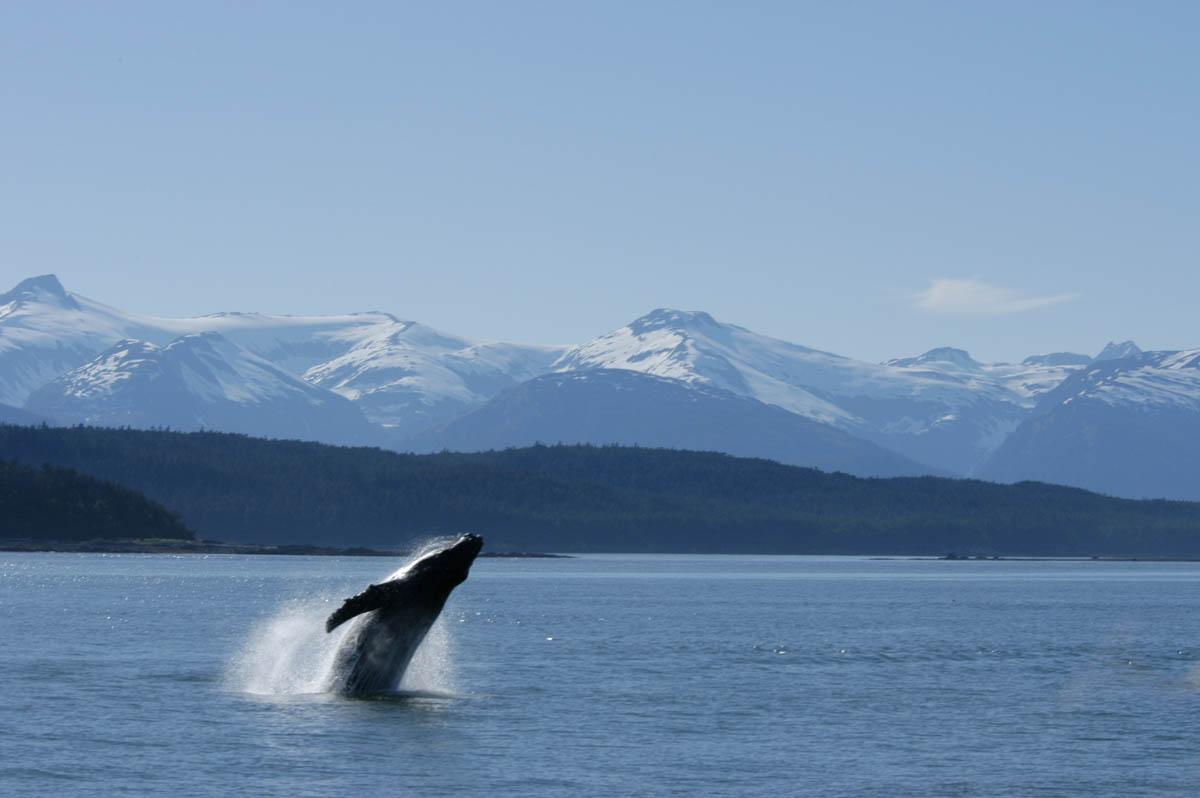Alaska is a wonderful wilderness destination for lovers of the great outdoors and one of the best places in the world to see whales. During your visit, you can expect to see humpback whales, orcas, gray whales, minke whales, and many other interesting marine species.
Over half a million tourists visit Alaska for whale watching in a typical year, and 66% of them choose Juneau for this activity. Juneau is situated in a prime location, alongside deep waterways and channels that serve as ideal feeding grounds for migrating whales.
Are you curious about why whale watching is so appealing to many people? Juneau is a great place to find out, but don’t book your trip just yet.
First, learn more about whales in Juneau, Alaska, and how you can get to see them in their natural environment.
What Whales Can You See In Juneau?
The Alaskan fjords are home to eight different types of whales, but only a few of them are commonly seen near Juneau. You can look forward to seeing the following species on a whale watching tour in this part of the world:
Humpback Whales
Every year, hundreds of humpback whales make their way from tropical breeding grounds to Juneau’s nutrient-rich waters, which attract a smorgasbord of krill and small fish for their enjoyment. Many of these large mammals, like the famous Flame, return to these waters every year.
The humpback whale is a species of baleen whale. They have no teeth and get all their nutrients from ingesting whatever they can filter from the seawater.
They’re large whales weighing up to 40 tons and are well-known for their acrobatic behaviors, like breaching, spy-hopping, and tail slapping. Humpback whales are considered gentle and intelligent, making them ideal subjects for observation.
Orcas (Killer Whales)
Orcas can reach lengths of up to 25 feet and weigh nine tons. They are known as fierce predators, capable of killing great white sharks. These beautiful whales aren’t aggressive toward humans and are athletic and fast, making them fun to observe while whale watching.
Juneau offers regular orca sightings in Alaska, especially from May to August every year, but they aren’t as abundant in this area as humpback whales are.
Less Common Whales in Juneau, Alaska
Orcas and humpback whales may be the stars of the show in Juneau, but you could also get to see more Alaskan marine life than you bargained for during a whale-watching outing. Other possible sightings include:
Minke Whales
Minke whales are the most abundant and smallest rorquals (a type of baleen whale) in the world. You can spot minke whales in Juneau during June, but they aren’t as common as humpback whales in this area.
Gray Whales
These whales make their way slowly through the waters of Juneau in May every year in groups of three. They are large, slate-grey whales with no dorsal fin.
Other Alaskan Creatures
During a whale-watching trip, you may also come across some of Alaska’s many other wildlife species. These include:
- Dall’s porpoises
- Dolphins
- Steller sea lions
- Harbor seals
Birds are also abundant, with 280 species recorded. Avid birdwatchers could get to check the following types of seabirds off their lists:
- Common murres
- Thick-billed murres
- Black oystercatchers
- Tufted puffins
- Horned puffins
- Marbled murrelets
When you’re done with the day’s whale-watching, Juneau has many other attractions to offer, such as game fishing, hiking, gold panning, and river cruises.
FAQs
Where’s The Best Place In Alaska To See Whales?
Although whale sightings are never guaranteed, whales stick to centuries-old migration paths and feeding zones, so their movements are relatively predictable. Based on this, the best places to see whales in Alaska are in waters close to the following ports:
- Icy Strait Point
- Ketchikan
- Sitka
- Juneau
Of these destinations, Juneau stands out as one of the best-equipped to cater to tourists in search of premier whale-watching experiences.
What Month Are Whales Most Active In Alaska?
The best whale seasons in Alaska span the warmer months from June to September. At these times, the warmer weather and sunshine prompt more whale activity, so you can look forward to some awe-inspiring acrobatic displays from these gigantic creatures.
Summertime in Alaska means there is sunlight until late into the evening, allowing visitors to make the most of everything Juneau has to offer.
Do You See Whales From the Cruise Ship In Alaska?
Cruise ship passengers may get the opportunity to spot whales during their trip, especially during the peak whale watching season. While onboard, you’re most likely to spot whales while spending time on your balcony or the ship’s deck.
Be sure to keep your binoculars and camera handy to enhance your sightings or take advantage of photo opportunities. Watch the water for signs of whale activity, like spouts.
Juneau whale watching tours offer a more personalized experience and better opportunities for sightings.
Do Whales Get Close To Cruise Ships?
All vessels in Alaskan waters must abide by strict rules for approaching marine mammals. Whales are curious creatures, though, and often approach boats of their own accord.
In these cases, you might get a chance to view them from up close and enjoy some of their acrobatics, like tail lobbing, spy-hopping, and breaching. When a whale’s tail flukes pop up, you might get the chance to take beautiful photos, but this usually means they’re about to dive deep underwater, where they could remain for up to an hour.
Spend Time With Alaska’s Wonderful Whales
By far the best way to see whales in Juneau, Alaska, is by booking a guided whale-watching trip. During these outings, you can look forward to expert insights about common species like orcas and humpback whales, personalized service, and excellent sightings.
Adventures in Alaska, ably led by Capt. Alan Corbett and his wife, Tanja, have been sharing their love of the Alaskan wilderness with visitors for over 20 years. We know all the best places to view whales in Juneau and also offer thrilling fishing expeditions to all the prime spots in the area.
Book your trip now to experience the beauty and power of nature in pristine Alaska.

